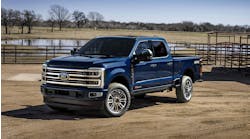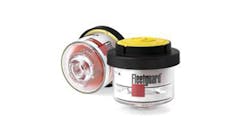1. Understand your OEMs’ warranty position on biodiesel and communicate with them your desire to use biodiesel blends in your diesel vehicles. For more information on OEM support for biodiesel, visit www.biodiesel.org/using-biodiesel/oem-information.
2. Ensure the biodiesel meets the ASTM specification for pure biodiesel (ASTM D 6751) before blending with petro diesel. Write these ASTM specifications into your fuel supplier’s bid specs.
3. Ensure your biodiesel blend supplier provides a homogenous (i.e., properly blended) product.
4. Purchase biodiesel and biodiesel blends from companies that have been certified under the BQ-9000 fuel quality program when possible.
5. Avoid long-term storage of B20 and higher blends to prevent degradation. Biodiesel should be used within 6 months.
6. Prior to transitioning to B20, it is recommended that fuel storage tanks be clean and free from sediment and water. Check for water and drain regularly if needed. Monitor for microbial growth and treat with biocides as recommended by the biocide manufacturer.
7. Biodiesel and biodiesel blends have excellent cleaning properties. Fuel filters on the vehicles and in the delivery system may need to be changed more frequently upon first switching to B20. After that the system runs cleaner with no issues.
8. Be aware of the biodiesel blend’s cold weather properties and take appropriate precautions. When operating in winter climates, use winter-blended diesel fuel. Make sure the biodiesel blend cloud point is adequate for the geographical region and time of year the fuel will be used.
9. Users of a B20 blend with #2 diesel will usually experience an increase of the cold flow properties (cold filter plugging point, cloud point, pour point) at approximately 2 to 10 degrees F.
10. Similar precautions employed for petroleum diesel during cold weather are needed for fueling with B20 blends: blending with #1 diesel/ 1 biodiesel, using fuel heaters and parking indoors and using a cold-flow improvement additive.
11. Perform regularly scheduled maintenance as dictated by the engine operation and maintenance manual.
The National Biodiesel Board offers a full curriculum of ASE-Certified continuing education courses on Biodiesel for Diesel Service Technicians.
Visit www.BiodieselAutomotive.org for more information.


